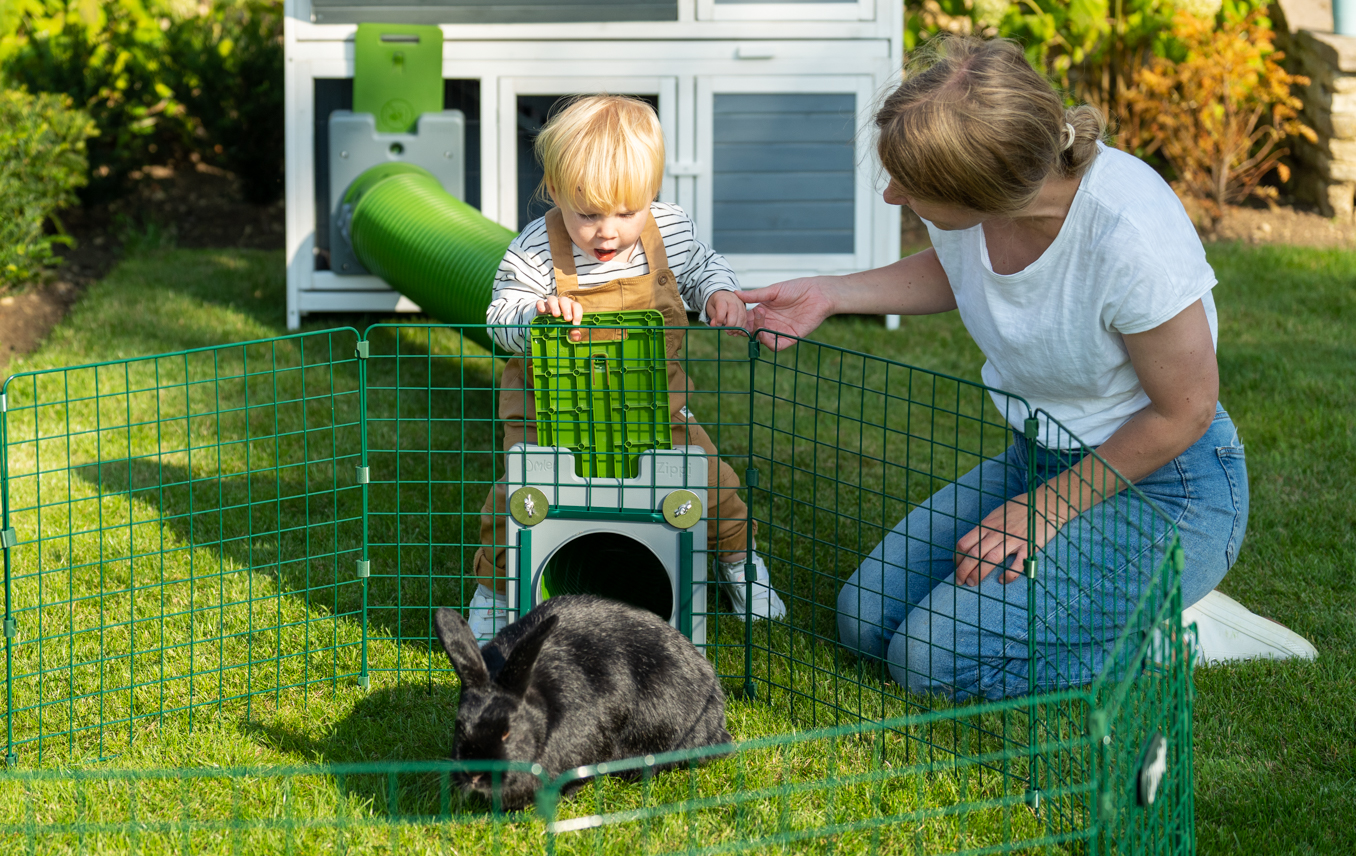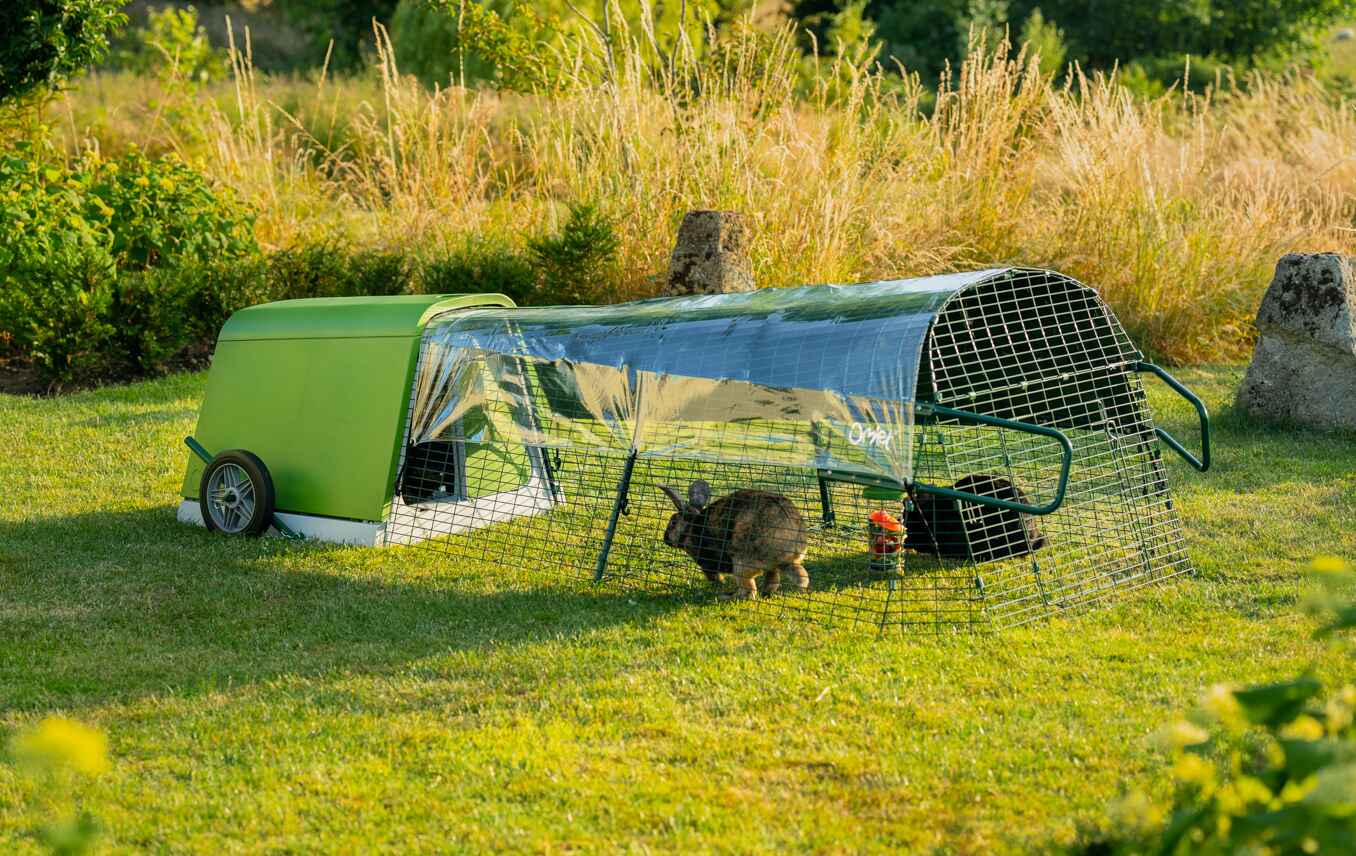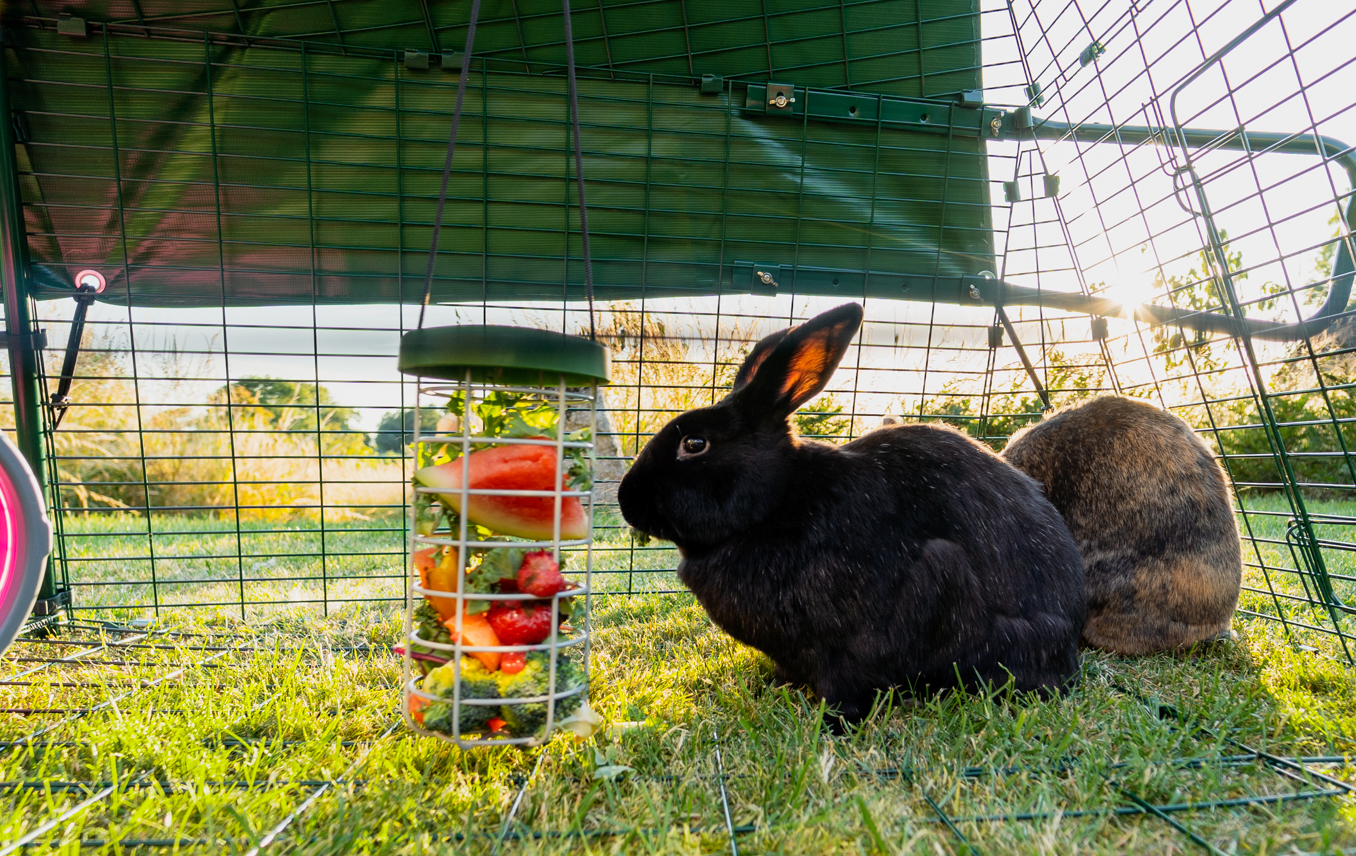Things to know before getting a rabbit
Thinking about adding a rabbit to your family? Rabbits make fun and interesting pets, and with the right setup and routine, they can live a long and happy life, bringing you joy for years to come. But there are a few things to know before getting a rabbit – from how many and what kind, to how they’re housed and what to feed them, here’s everything you need to know before bringing home a bunny.
Rabbits need a friend
First and foremost, rabbits are social animals that need the companionship of other rabbits. In the wild, rabbits live in large groups that form colonies, but domesticated rabbits are content with having just one friend. Opposite gender pairings introduced at a young age usually form the best bunny bonds, but it’s possible to slowly introduce two grown rabbits, or those of the same gender.
All male rabbits should be neutered, even if there are no females around. This is because males can become territorial and injure each other in testosterone-fueled duels. Similarly, all females should be spayed to help minimize moodiness and territorial displays. Spaying females also prevents uterine cancer and phantom pregnancies.
Once bunnies are bonded, they should never be separated unless absolutely necessary. This is especially true for same gender pairings, as they can become territorial when they are reintroduced – even after a brief time apart. Once bonded, rabbits that live together constantly will be very close, and you’ll be able to witness their adorable snuggling, grooming, and playtime antics.
Types of rabbits
There are several breeds of rabbits to choose from. Some have erect ears, while others have lopped (floppy) ears, some breeds like the Flemish Giant are large and some like the Netherland Dwarf are small. Breeds like Angora rabbits have long, thick fur, while breeds like the Rex rabbit have short hair.
Whichever breed or breeds you choose, make sure they’re suitable for your climate and lifestyle. Breeds with thick hair will tolerate cold temperatures much better than hot climates, and large rabbits need plenty of space to stretch their long legs. Select and research a few breeds you’re interested in, and then determine what type of setup your yard can accommodate.
Bunny behaviours
There are a few behaviours that bunnies have that new owners might not be prepared for. Here are some common characteristics and behaviours from rabbits that owners should keep in mind.
Digging
All rabbits dig. Bunnies have carried over their need to burrow from their wild ancestors. If allowed to do so, they will happily dig their own tunnels in your yard, their enclosure, or your carpet. All outdoor rabbit enclosures should have wire along the bottom to prevent your bunnies from tunnelling out, and they should never be left unsupervised while playing in the house. Dig boxes made with dirt, shredded paper, or other materials can be created for your rabbits for them to satisfy this urge.
Ever-growing teeth
Rabbits have teeth that never stop growing. Because of this, they need access to apple wood chews and timothy hay at all times. By gnawing and chewing on these, they’ll keep their teeth filed down and in check. If left to grow, a rabbit’s teeth can cause issues when eating and drinking, and can even grow into their jaw, creating painful puncture wounds and abscesses.
Thumping
This sound is unmistakable – two powerful rabbit feet coming down together in a very audible thump. It’s a quick sound made by your rabbit to let you know they are feeling threatened or uncomfortable. It doesn’t always convey aggression, but a thump is nevertheless a warning that they are not pleased with the situation they’ve found themselves in. Take caution with a rabbit that is thumping at you, and change tactics to make them feel more at ease.
Exercise
Bunnies need as much space as possible to run around and stretch their powerful legs. You may find your rabbit performing some theatrics like getting the “zoomies” – a sudden burst of energy on display by them running in a repetitive pattern. There’s also the bunny “binky”, which is an adorable twisting hop motion that some people also refer to as “popcorning”. These behaviours are the sign of a contented rabbit with an adequate amount of space.
A bunny abode
While you can keep rabbits indoors, they are much happier outside. Rabbits can be kept outdoors year round as long as the proper precautions are taken. With these essentials and some care from you, your outdoor rabbits can enjoy living as close to nature as possible.
A secure rabbit hutch with attached run
All bunnies need a hutch to sleep, hide, and shelter in during inclement weather. The Eglu Go Rabbit Hutch is designed to withstand any weather, and is twin-wall insulated to maintain a comfortable interior temperature. It’s also easy to clean, can be moved easily with the addition of optional wheels and handles, and is spacious enough for two rabbits to fit comfortably.
The Eglu Go is designed with an attached run with full mesh flooring, which prevents escape attempts via tunneling and stops predators digging in. Our attached runs bolt onto the hutch itself, under the outer casing, and are made of heavy duty welded steel mesh, creating a fox proof environment. (Although, please ensure you check the clips over time to ensure all parts of the run are tightly closed together – over time, clips can weaken.)
Alternatively, you can place your Eglu Go inside our Walk In Run. There is no need to shut your rabbits inside the hutch compartment at night, unless in extreme cold weather (and depending on which breed you have, and their tolerance for cold). This way, they can set their own schedule and stay active during the night and before dawn, letting them live according to their natural biorhythm.
Rabbit runs and playpens
Your rabbits’ run should be large enough for both of them to run and exercise comfortably. Additional rabbit runs and playpens can be added to your primary setup to provide even more space, connected by Zippi Rabbit Tunnels. This design closely mimics the burrowing system that wild rabbits use and brings your domesticated bunnies closer to their natural habitat. Zippi Rabbit Platforms can also be added to their playpens to utilize vertical space and offer a shady reprieve below.
Bunny bedding
The bedding of your bunnies’ hutch should be a non-toxic, absorbable material. Most rabbit owners find that pine shavings or pellets, or recycled paper bedding are the best materials to use. Avoid using hay or straw with rabbits, as these hold moisture and promote mould and mildew growth.
Your rabbits’ hutch should be cleaned at least every other day, preferably with daily bedding changes. Once a week the entire hutch should be wiped or sprayed down, and the bedding completely refreshed. This is especially important during the warmer summer months when your rabbits are at most risk of rabbit flystrike.
Feeding your rabbits
Rabbits need a quality pellet feed and timothy hay – which should be their primary source of nutrition. Hay should be left out free-choice and filled as needed, while pellets should be fed as directed by the packaging – roughly an egg cup a day per rabbit is a good guide. Rabbits will eat – and poop – constantly, and need the fibre in the hay to stay regular. They can become seriously ill very quickly if they stop eating and pooping, so it’s important not to overfeed them with pellets, as this can result in them not eating the necessary amount of hay.
Rabbit-safe fruits and vegetables can be offered as treats 2-3 times a week, but always in moderation. Leafy greens served in a Caddi Rabbit Treat Holder, non-starchy vegetables, and berries are the best choices. Fresh, clean water should also be available at all times for your rabbits.
Handling your rabbits
Some rabbits take kindly to being cuddled, while others are more content to receive scratches from ground level. Either way, at some point it’s likely that you’ll need to handle your rabbit. The safest way to hold a rabbit is to angle their head so that it’s under your upper arm, with its nose pointed behind you. Tuck the rest of your rabbit’s body against your side, and secure them in a “football” hold with your lower arm and your hand wrapped around their hips. Always be mindful of your rabbit’s powerful back legs and sharp claws when handling them.
Veterinary care
It’s a good idea to have a veterinarian to contact if your bunnies ever feel ill or become injured. Not all veterinarians are equipped to treat rabbits, so be sure to select one that will treat your bunnies well before you bring them home. It is a good idea to get your rabbits vaccinated – consult your veterinarian to discuss what vaccines your rabbit needs.
Omlet and your rabbits
From easy to clean rabbit hutches and spacious rabbit runs, to ingenious and unique rabbit tunnel systems, we have everything you need to make your rabbit keeping journey both enjoyable and extraordinary. Create setups that are as unique as your rabbits, and build bonds with your bunnies that will last a lifetime. With Omlet, owning rabbits has never been more fun.
This entry was posted in Rabbits



